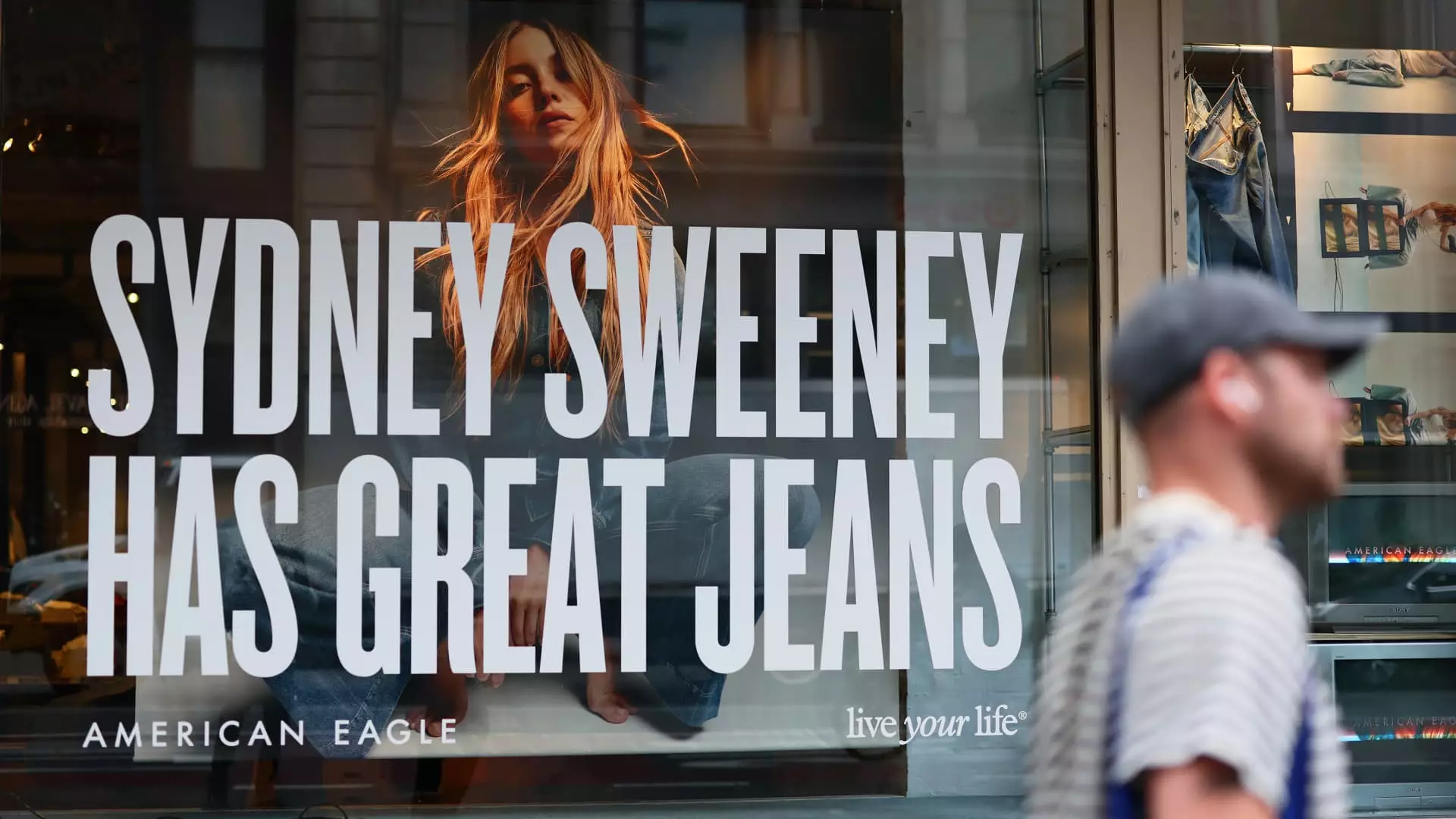In an era where marketing is increasingly intertwined with cultural and political signals, the recent boost in American Eagle’s stock following a casual endorsement from former President Donald Trump underscores the complex dynamics at play. This intersection reveals how celebrity, political alignment, and social validation can unexpectedly influence consumer perception and corporate success. While many brands shy away from overt political associations, the reality is that savvy marketing can leverage seemingly incidental endorsements—like a former president’s tweet—to sway public sentiment. Yet, this tactic is inherently risky, as it may alienate or rally specific demographics, leading to unpredictable outcomes. American Eagle’s surge after Trump’s comment exemplifies how political validation, regardless of intent, can act as a catalyst, but it also exposes how fragile the line between persuasion and controversy truly is.
This scenario prompts critical reflection on whether brands should consciously court political validation. For some, like American Eagle, the gamble appears to be aimed at harnessing a more conservative or traditional demographic—those who might resonate with Trump’s praise. However, this approach reveals a troubling undercurrent: that consumer support is sometimes less about product quality and more about aligning with broader cultural narratives. Such tactics risk transforming marketing from a genuine representation of brand values into a strategic dance around political allegiances, which can easily backfire when cultural tides shift.
The Risks and Rewards of Navigating Cultural Shifts
The American Eagle campaign featuring actress Sydney Sweeney appears straightforward on the surface—an effort to promote a relatable, youthful image. But the controversy surrounding its slogan exemplifies the peril of catering to a particular cultural aesthetic. Critics accused the ad of sexualization and problematic undertones, giving rise to a broader conversation about the boundaries of marketing. Yet, the company’s response—a simple assertion that the slogan was about jeans—misses the opportunity to engage directly with consumer concerns or to redefine the narrative on their terms.
This incident illustrates the nuanced challenge that modern brands face: how to strike a balance between authenticity, cultural sensitivity, and effective advertising. When marketing campaigns become symbols in larger cultural debates about gender, race, or morality, companies must decide whether to engage or remain silent. The latter risks perceptions of indifference, while the former can amplify controversy. American Eagle’s cautious response suggests a reluctance to double down on a potentially divisive campaign, but in doing so, it forfeits the opportunity to turn critique into credibility.
The broader lesson is that marketing today exists in a battleground of cultural values. Companies that either ignore or fail to anticipate the implications of their advertising risk alienating important customer segments or facing harmful backlash. Conversely, those willing to navigate with transparency and a willingness to adapt can emerge stronger—if they handle backlash thoughtfully.
The Flux of Consumer Attention and the Power of Public Discourse
In recent years, the digital age has made consumer attention both a scarce resource and a battleground. When American Eagle launched its campaign, it was trying to recapture the interest of a declining segment of retail shoppers—those increasingly skeptical of superficial advertising that feels disconnected from genuine cultural representation. The fallout from the campaign demonstrates that consumer engagement is now less about the product and more about the values and social signals that brands send.
The instance of meme stock mania—initially driven in part by social media chatter—highlighted how volatile consumer sentiment can be. The subsequent dip, followed by a rally sparked by a political figure’s endorsement, demonstrates the unpredictable influence of external factors. Consumer attention is no longer dictated solely by advertising budgets but is also heavily influenced by social discourse, political rhetoric, and online narratives.
This cycle underscores the necessity for brands to develop a more nuanced understanding of cultural shifts. Rather than trying to merely catch and ride the wave of popular opinion, the most resilient brands will actively participate in shaping ongoing conversations, aligning their brand identity with evolving cultural standards. Such engagement must be authentic and strategic, rooted in a clear sense of corporate values rather than opportunistic maneuvering.
The Fragile Balance Between Innovation and Tradition in Branding
Ultimately, American Eagle’s experience reveals the precarious nature of modern branding—where innovation is necessary to stay relevant, yet overly performative or disconnected efforts risk alienating core audiences. By aligning with a celebrity and tone that resonate with some, while offending others, the company exemplifies the gamble involved in societal positioning. What’s arguably more damaging than a failed campaign is the static refusal to evolve or confront criticism head-on.
A center-leaning liberal perspective might argue that true progress involves respectful dialogue and a recognition that culture is fluid. Brands should focus on authenticity—meaningful representation and genuine engagement—rather than superficial marketing that panders to one side or another. When companies attempt to navigate the political and cultural landscape without clarity or conviction, they often end up as casualties in broader ideological battles.
The American Eagle case study exemplifies how consumer trust depends on authenticity, not merely market share strategies rooted in cultural signals. It drives home the reality that in today’s social climate, the most successful brands will be those that balance innovation with respect for cultural sensitivities. Moving forward, corporations must carefully consider who they endorse—or risk becoming casualties of societal polarization and cultural misappropriation.

